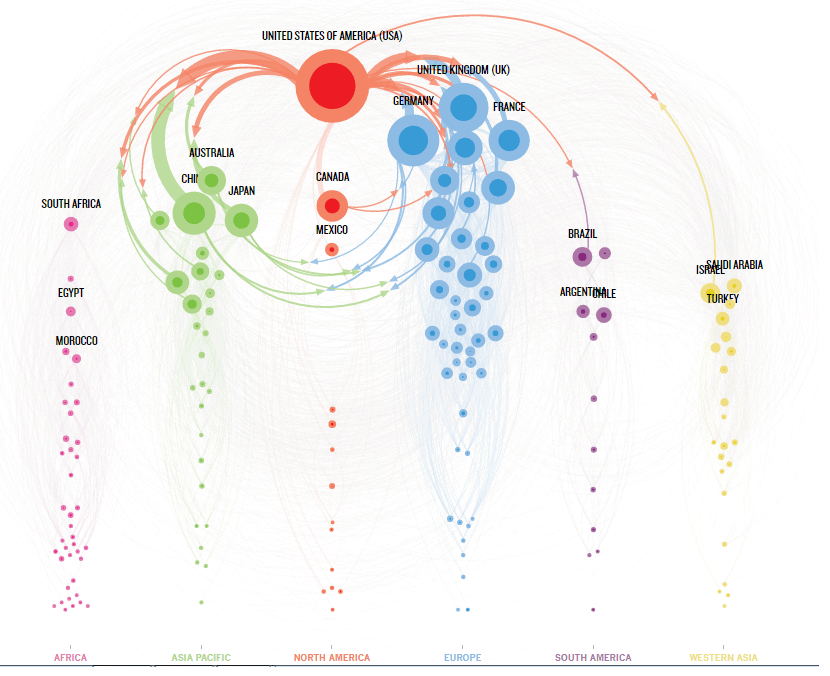The Nature Index highlights scientific outputs from countries, organizations, and even individual researchers. They have a whole lot of insightful information, including the chart presented below, which shows weighted international scientific collaborations.
The United States obviously dominates, being the “head” of the octopus and being linked in collaborations with almost everyone from all continents. Then geographical and cultural ties are evident, with countries from the same continent collaborating more with each other than with those from other continents. Europe especially seems to be gaining from the European Union project, and for all the flak it gets it seems to be doing a pretty good job, at least science-wise.
[Also Read: These ten organizations dominate science publishing, and it’s probably not who you think]
It’s interesting to note, however, that strong intercontinental ties are also visibly mapped. Again lots of “juice” is coming mostly from the US. Canada also has a strong relationship with Germany, surprisingly even more so than with France and the UK, with which they share common languages. The US and Israel also have a strong bond, while Japan is engaged in several European collaborations.
What I do find a bit surprising, though not completely unexpected, is the relative lack of Chinese collaborations. Despite publishing more than any other country (arguably), China isn’t very cooperative relative to their total output. There isn’t much to gain from this introversion – on the contrary. Now that China has become a global powerhouse, we’d expect them to open their doors more and interact with other countries, though this of course takes time.
I look forward to seeing how future years’ charts will look like. Hopefully, ties will become even stronger.










